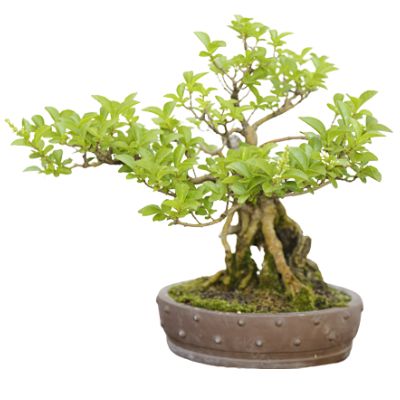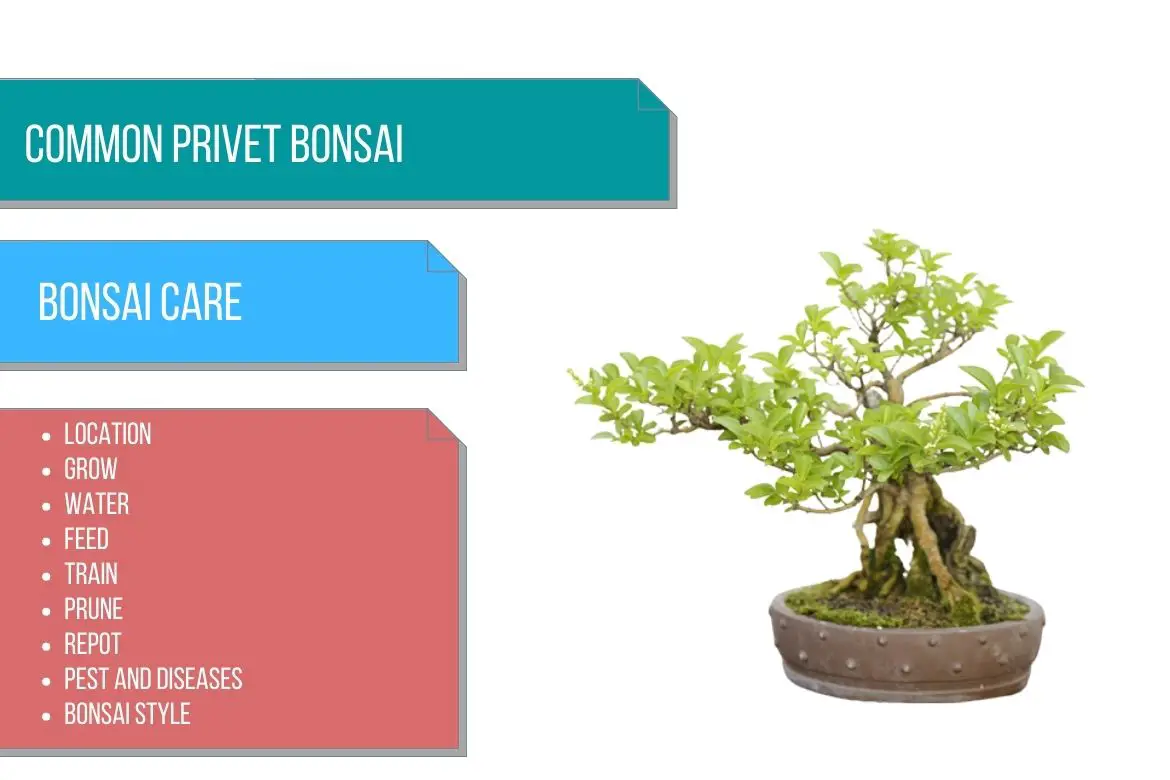
Common privet
(Ligustrum vulgare)
Country of Origin : Europe
Bonsai Styles : Informal upright, slanting, root-over-rock, clasped-to-rock, twin-trunk, clump, group
Zone : 4 – 6
In addition to being an attractive hedge plant, Ligustrum vulgare also makes an attractive bonsai. The bonsai community has demonstrated that common plants like this can be transformed into outstanding bonsai specimens.
Besides being easy to grow, this species also has many attractive features. Common privet are also known as European privet or wild privet.
Driftwood effects can be achieved on the trunks thanks to the impressive appearance.
It is a hardy deciduous tree which has neat small leaves, and has branches that are easy to wire.
It is mostly grown as an outdoor bonsai.
There are other varieties of Ligustrum group such as Ligustrum sinense (Chinese privet bonsai tree) and Ligustrum lucidum which can also be trained as bonsai trees.
Best location to keep Common privet Bonsai
Ligustrum vulgare bonsai tree is completely hardy in temperate climates (zones 4-6) and therefore does not need special protection during the winter.
You can keep it in full sun during the summer.
Refer sunlight requirements for indoor plants for more indoor gardening ideas. Also, refer to do bonsai trees need sunlight for more indoor and outdoor bonsai location ideas.
Propagation of Common privet
Much like Chinese Privet bonsai tree, Common privet can be propagated by sowing seeds, air layering or stem cuttings.
Watering Common privet Bonsai
Between spring and late fall, water the plants regularly, but allow the soil to dry between watering sessoins.
In winter, keep the bonsai soil just moist.
Wiring Common privet Bonsai
Wiring of common privet bonsai trees can be done at any time of the year.
The shoots that have been formed in the current season should be wired. The wires should not be left on the bonsai tree for more than one season.
Pruning Common privet Bonsai
When to prune Common privet bonsai?
How to prune Common privet bonsai?
Ligustrum vulgare tree grows rapidly and is extremely vigorous.
Common privet bonsai tree can be hard pruned at any time of the year. However, summer is a good time for hard pruning as the pruning wounds will heal faster.
If necessary, cut back to the main trunk.
You should carve thick trunks in the spring or summer if you want them to enhance the bonsai style resemble the hollow trunks of the common privet trees found in nature.
Pinching Common privet Bonsai
To maintain the shape of the plant, you will need to trim the shoots constantly, and new shoot tips will need to be pinched out constantly during the growing season.
Repotting Common privet Bonsai
When to repot Common privet bonsai?
Early spring is a good time to repot common privet bonsai tree.
Repotting can be done every other year. However, if the root becomes pot bound in the bonsai pot, it can be done every year.
Use a free draining, moisture retentive bonsai soil mix.
OR
Use a mix of 60% organic matter and 40% grit.
Must Read: Bonsai Soil Recipes
Must read : Choosing the right bonsai container
Feeding Common privet Bonsai
Apply a balanced feed throughout the growing season.
Change this to nitrogen free feed in fall.
For more details, read how to use bonsai fertilizers depending on the season.
Diseases and pest of Common privet Bonsai
They are susceptible to scaled insects and sap-sucking insects such as aphids. If you cannot pick them off by hand, spray or apply a systemic insecticide.
Common privet bonsai care
Common privet is generally trouble-free. Just make sure it is not subjected to water logged conditions.
It can also tolerate some drought.
The berries they produce look like blackberries. However, they are poisonous.
Dense, fibrous roots filling up the bonsai container can slow down water penetration in the pot as well.
What to look for when buying Common privet Bonsai
A nursery tree watered on a regular basis may develop root rot, so make sure the tree is firm in its bonsai container before you buy it.


